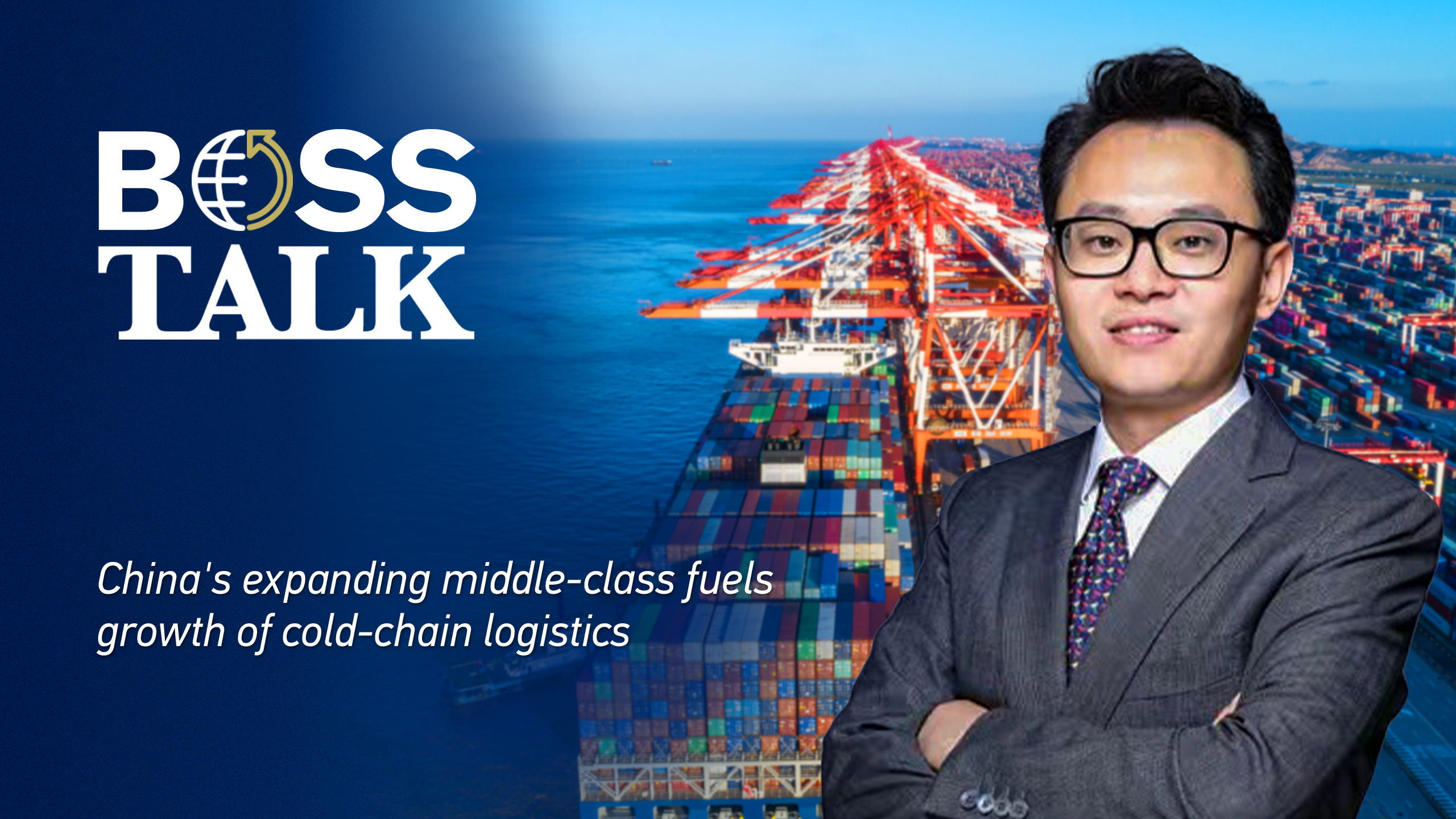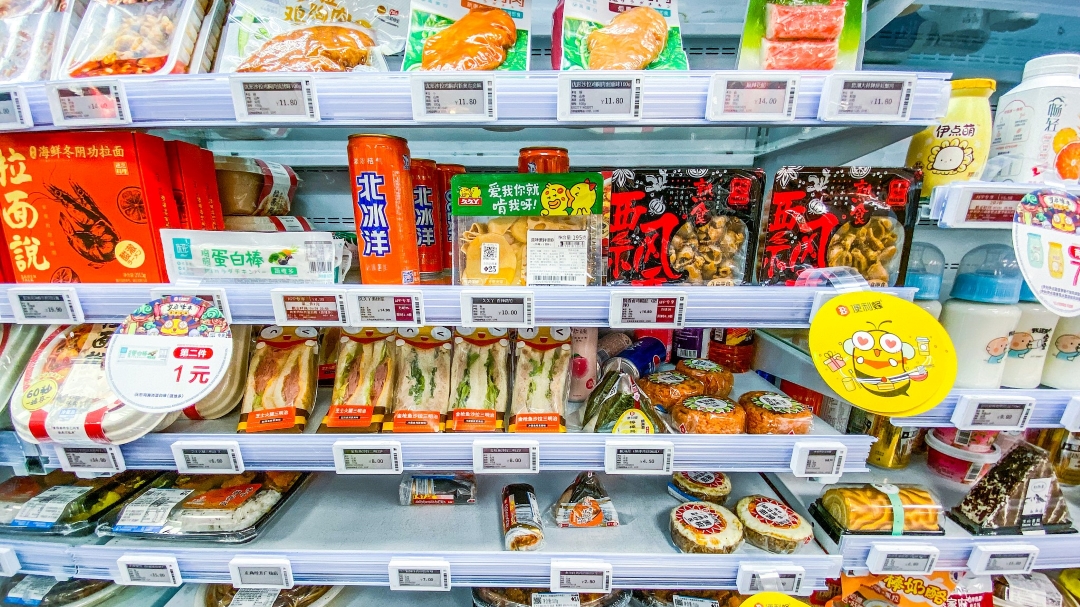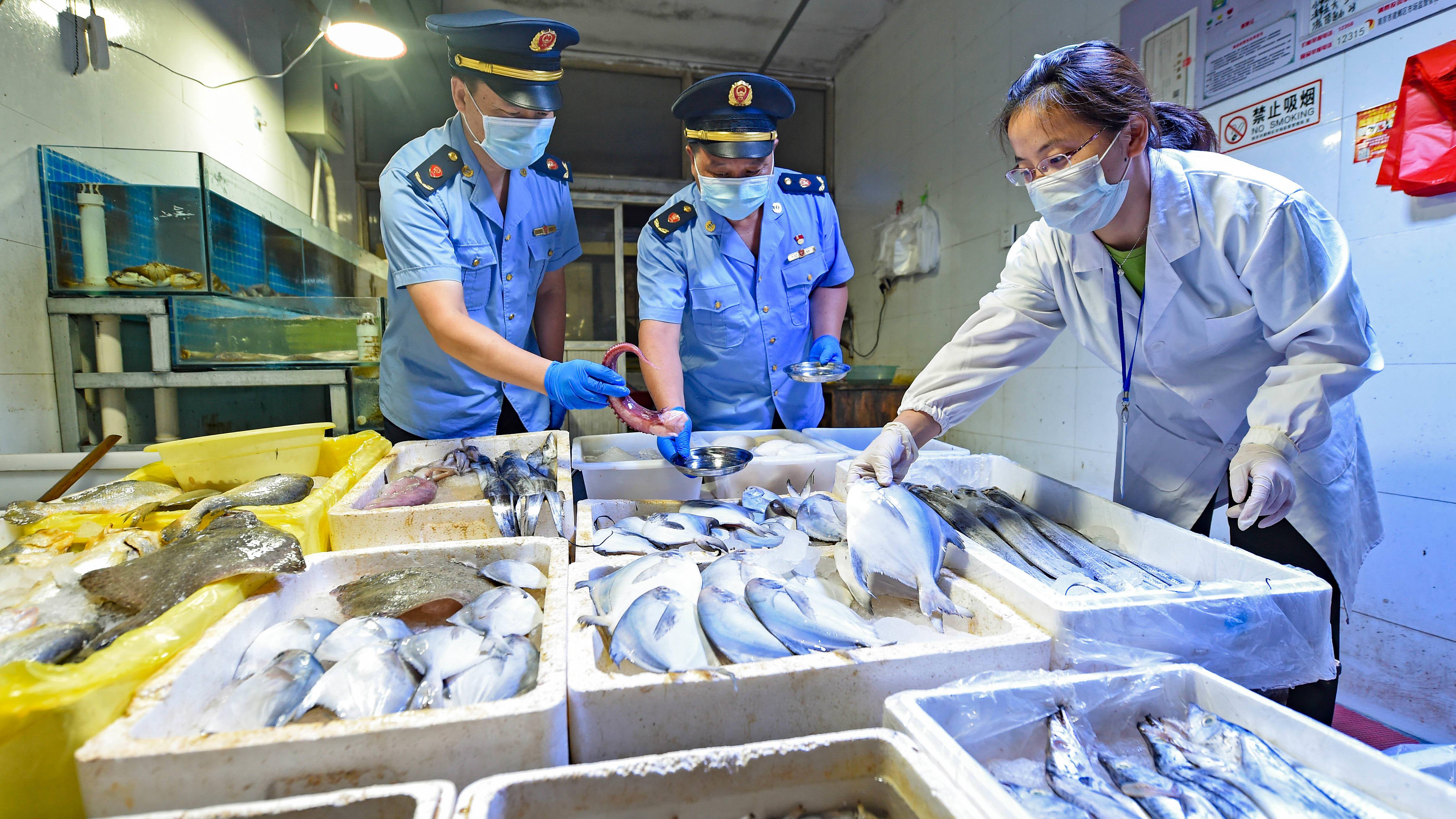04:10

Many of China's city dwellers chose to stay put for Spring Festival rather than returning back to their hometowns so as to reduce the risk of COVID-19 transmission.
The young away-from-home consumers caused a surge in sales of semi-finished Chinese Lunar New Year's Eve dinners. Chinese social media was full of these 'self-made chefs' showing off their feasts online.
Online sales of semi-finished New Year's Eve dinners increased by 376 percent year on year within 10 days of the launch of the annual national e-commerce shopping campaign leading up to Chinese New Year, data from the Ministry of Commerce shows has shown.
Rising demand for ready-to-cook and semi-finished ingredients has evolved into a major trend in the catering industry, fueling growth of cold chain logistics, said Qin Yuming, secretary general of the Cold Chain Logistics Committee of the China Federation of Logistics and Purchasing.
The post-90s and post-00s generation supports what we call the "lazy economy," he commented. This reflects a habit for fast consumption among China's younger generation, of which few would make the effort in visiting the grocery stores for raw ingredients to cook, he added.
"We saw that during the COVID-19 pandemic last year, all frozen, semi-finished product manufacturers generated good profits," he told CGTN.

Semi-cooked foods in a convenience store in central China's Henan Province, January 15, 2021. /CFP
Semi-cooked foods in a convenience store in central China's Henan Province, January 15, 2021. /CFP
Preference in purchase
The construction of cold chain infrastructure has sped up in the past decade, Qin said. The annual growth of refrigerated trucks was about 8,000 units in 2010, but in caparison, the monthly growth rate was 8,000 units last year, he illustrated.
Cold chain logistics is closely related to economic development. When GDP per capita reaches $10,000, consumers' spending power will carry the sector to rapid development, Qin said. China qualified for this stage in 2019.
"We predict that the next 10 years will record the rapid development of cold chain logistics," he added, while also cautioning on the uneven build-up of infrastructure. Weak spots lie in production site storage and smaller cities' transportation systems.
China is by far the world's largest exporter of agricultural produce. "In recent years, our committee has dealt with many companies which used to export, but have switched to selling domestically," Qin told CGTN.
When the pandemic disrupted export routes, more companies looked inward for opportunities. Qin's committee has set them up with large domestic fresh food platforms, and sales continued well.
Aspects such as quality and packaging completely meet Chinese export standards, which caters to domestic consumers' preferences when purchasing, Qin commented.
China is implementing "dual circulation" economic development pattern that takes domestic development as the mainstay, with domestic and international development reinforcing each other. Being the world's largest market for fresh food products, the country holds several large food trade exhibitions annually. Qin observed that these exhibitions are expanding as more traders arrive from abroad.
"I think the challenge may be the pandemic, it depends on how well these countries control it," he said.
Imported food
Imported products from cold chain logistics testing positive for COVID-19 have rattled nerves among consumers. The virus thrives in damp, cold conditions and can linger on a product's surface.
Some observers have questioned why no cases of contamination have been reported outside of China.
"Resources are focused on treating people in places where the pandemic is still out of control. Without testing on exported and imported goods, it's impossible to know whether there's contamination," said Qin.

Food quarantine staff are testing seafood for the novel coronavirus at a store in east China's Nanjing, Jiangsu Province, June 16, 2020. /CFP
Food quarantine staff are testing seafood for the novel coronavirus at a store in east China's Nanjing, Jiangsu Province, June 16, 2020. /CFP
China has been able to test imports stringently as it has controlled its domestic outbreak. Qin emphasized that even if contamination occurred, there is no credible evidence to show that virus particles on packaging will infect people.
Zhang Wenhong, a Shanghai-based infectious disease specialist who has become a well-known figure for updates on virus-related information, specifically pointed out that, so far, no one has contracted COVID-19 due to eating imported food.
"So far, no case has occurred where people were infected due to purchasing imported goods," Zhang said in an interview with state television last month. "The customs authorities have gone through so many disinfection steps. In fact, it has been done quite well. When the probability (of being infected) is lower than a plane crash, you decide for yourself (on purchasing imported products)," he added.
"For us, long-time practitioners in the industry, we consume cold chain food as usual. (Buying) fresh products, (visiting) Japanese restaurants, we go as usual," Qin said.
A tracing platform for imported cold chain foods was launched by the State Administration for Market Regulation last December, allowing the origin of imported foods to be checked.
Up until now, 90 percent of imported cold chain foods have been recorded on the platform as long as they arrive from port, Qin detailed.
"We can now say with full responsibility that the products you see in supermarkets or restaurants are safe," Qin said.
China's appetite for frozen seafood from overseas has grown rapidly in recent years. Huachuang Securities predicted that the scale of fresh food e-commerce in China is set to exceed 800 billion yuan in 2022, while the demand for cold chain transport will expand from 80 billion yuan in 2019 to about 200 billion yuan in 2022.
Video editor: Wang Yulian
Cover image designer: Feng Yuan

